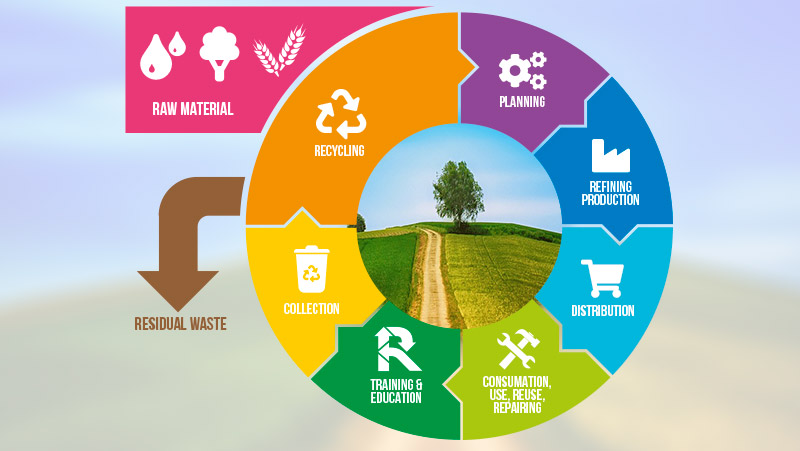An economy that is self-regenerating, benefits humankind and the environment, reduces waste and limits the use of other resources
If we care about the wellbeing of the environment in which we live, we can’t overlook a topic that is more important than ever: the circular economy.
But what is the circular economy?
By way of a definition, we would like to use the simple yet effective words of the Ellen MacArthur Foundation, which works to advance opportunities around the circular economy: “an economy that is restorative and regenerative by design.” It’s an economic system designed to reuse materials in successive production cycles, minimising waste and above all restricting the use of further environmental resources.
It differs from what is known as the linear economy, in which raw materials are exclusively extracted from nature and transformed into manufactured goods and services that are consumed and, after use, eliminated as waste.
On balance, can the circular economy be profitable?
It would appear so, judging by what emerged from the European Commission’s report on the results of the circular economy action plan. Indeed, €147 billion was generated, exactly eight times the initial investment of about €17.5 billion, without taking into account the over four million workers employed by the circular economy in 2016 alone.
An important objective of the plan is to tackle all individual stages of a product’s life cycle: manufacture, consumption and use, disposal and market for the primary and secondary materials. All with an eye on the circularity of the plastic materials industry, partly thanks to the development of increasingly effective and innovative technologies, encouraging sustainable development and generating additional new jobs.
The European Commission has also set the percentage of recycled plastic that must be used in the manufacture of all PET bottles, aiming at the collection of 90% of plastic bottles by 2029 and introducing specific requirements for separated waste collection, with an ambitious ultimate goal: 60% waste recovery.
Italy itself will play a major role in all this, emerging as one of the European Union’s first green economies due to improvements in the eco-efficiency of raw materials, of energy consumption, of waste generation and of atmospheric emissions, as stated in the GreenItaly 2018 Report.
But that’s not all: according to a recent article in the Sole 24 Ore newspaper, “we need to increase the demand for recycled products and provide Italy with recycling plants”. This is what emerged from the study The Circular Economy, the role of Italian industry. The General Confederation of Italian Industry and the Ministry of the Environment agree on outlining a common path towards ever increasing sustainability, beginning by simplifying regulations: “Industry is ready to make its contribution, but it must be able to rely on a regulatory, technological and economic framework that supports rather than obstructs the achievement of such goals.”
Another important step forward is the Circular Plastics Alliance – an initiative that aims to close the gap between the supply and demand for recycled-plastic products, improve the quality of the recycled material and reach 10 million tonnes of recycled plastic by 2025. Thanks to the Circular Plastics Alliance, more than 100 signatory companies have committed to using recycled plastic for at least 60% of the products they manufacture. As for us, we can change our approach at the moment of purchase and choose products with recyclable packaging. Together we can all contribute to achieving the fundamental goals of the circular economy for the good of the environment in which we live, the wellbeing of which depends in part on us and our choices.

